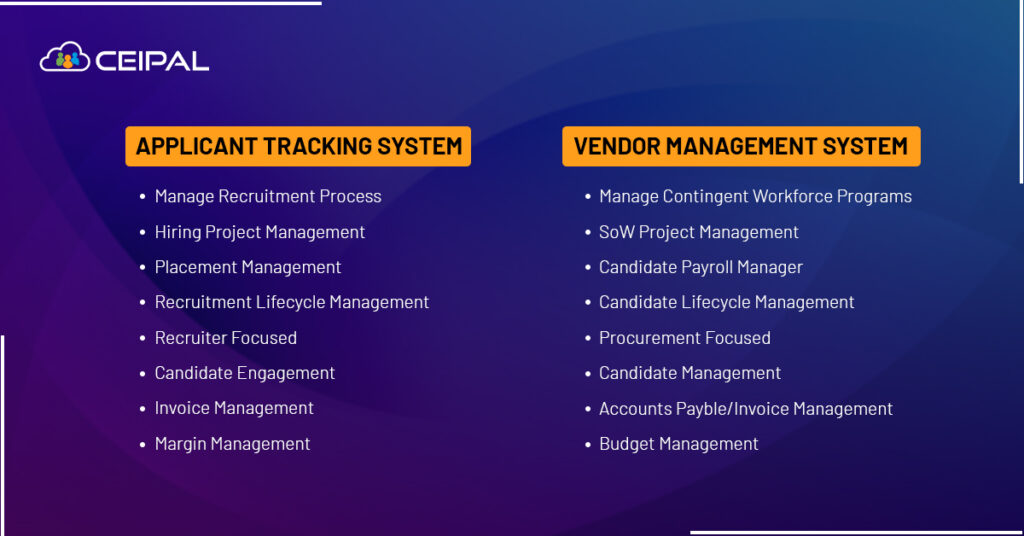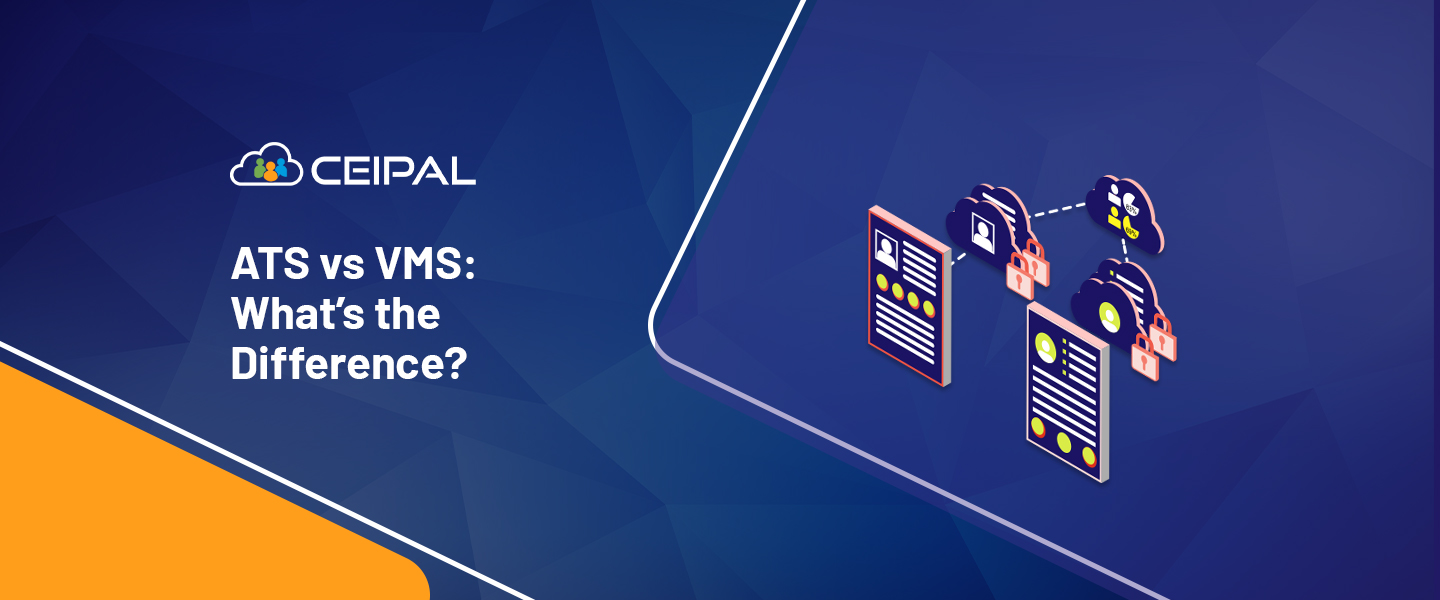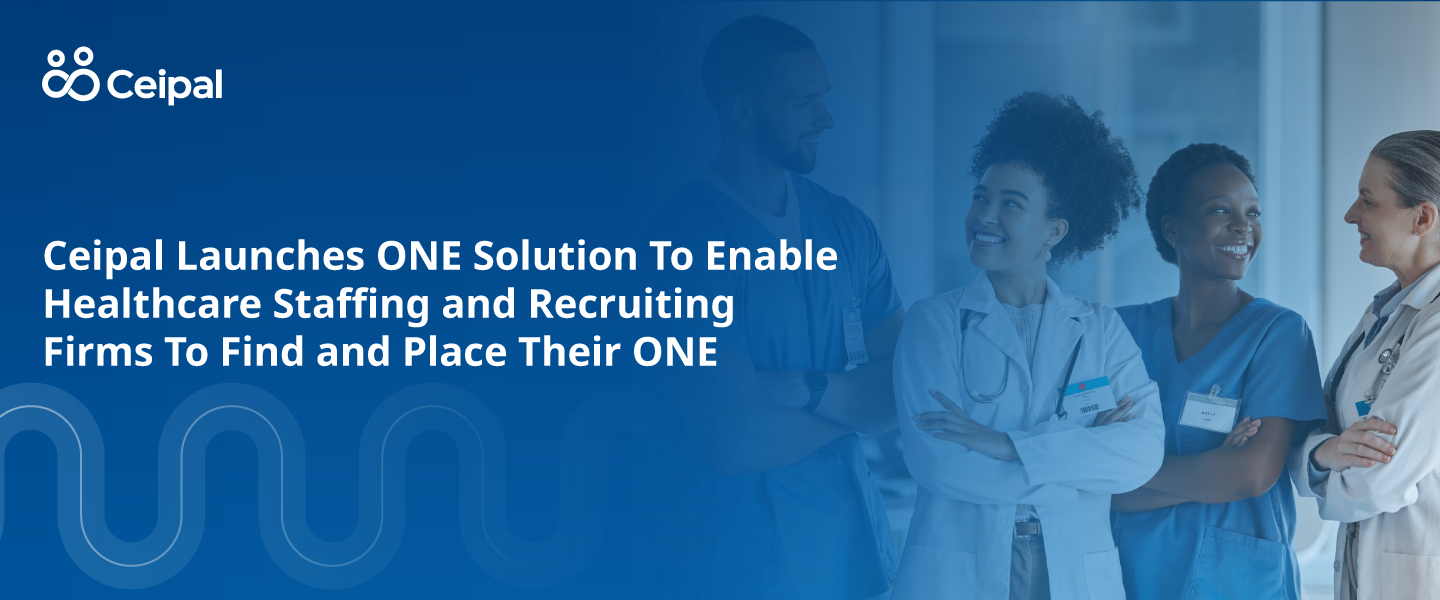Not sure whether you should buy an Applicant Tracking System (ATS), Vendor Management System (VMS), or integrate both of them? Let’s start by explaining what these terms mean.
What’s the Difference?
An Applicant Tracking System is a talent management recruitment software used by recruiters to screen resumes, source candidates, shortlist candidates, post jobs on multiple job boards, and manage huge databases of applicants. An ATS is built for a wide range and size of staffing companies and enterprise organizations.
A Vendor Management System is a web-based application that acts as a mechanism for businesses to manage and procure staffing services. A VMS is used to manage talent, SOW projects, suppliers, and vendors all in one place. Due to its high volume low margin model, companies use VMS extensively for temporary staffing.

Want to Source Candidates Like a Pro?
Read an eBook Designed for Smart Recruiters Like You
Why Do You Need Both?
Although there are a lot of overlaps in the functionality of a VMS and an ATS, such as the ability to publish jobs across job boards and access client and vendor information, both are highly unlikely to be used as an alternative for the other since the core processes of each are made for different purposes. Here are a few key differences that might be useful to you:

Get the Best of Both Worlds
With an integrated VMS and ATS, multiple organizations can deal with contingent workforce operations, Statement of Work (SoW) projects, and track vendor performance efficiently. It is especially important to have all stakeholders – from resource management and recruitment to hiring teams and finance teams – track the details of the entire process.
A few notable benefits of having an integrated system include:
- Automating Business Processes. Once you have a better understanding of the system, the lack of duplicacy helps to delete double applicant profiles created and in turn increases the productivity of your whole organization. The automated workflows build a process to enhance recruitment and improve vendor efficiency.
- Better Visibility. Once you have integrated both, you have visibility across platforms on suppliers and vendors as well as clarity as to who is reporting to whom, status change notifications at each level, and a defined process, which tells you which vendors are bringing the best value to you. With better visibility and fewer manual tasks, teams can make informed and effective decisions that increase the speed and accuracy of their work.
- Connected Reports and Analytics. With integrated reporting and analytics you can access real-time insights into each activity and determine pain points to address, while also focusing on that need improvement to speed candidate submissions and increase productivity.
A tailored solution contextualizing your business needs eliminates unnecessary overlaps and gaps in the system while catering to your unique requirements.









